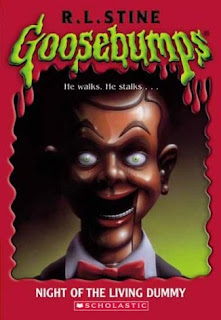Cinema
polymath David Gordon Green wants to direct every kind of movie from Malickian
sun flare panoramas (George Washington,
All The Real Girls) to boob comedies (Your
Highness and his undisputed masterpiece The
Sitter) to road trip 70s throwbacks (the little-seen Prince Avalanche) to Great Actor character studies (the mighty Joe and effete Manglehorn). Now he’s doing his political satire with the George
Clooney-sanctioned Our Brand Is Crisis,
based on a ND (Notable Documentary) and starring Sandra Bullock, in a role
originally meant for Clooney, as “Calamity” Jane Bodine, a vaunted campaign
strategist brought out of semi-retirement to run the hopeful ascent of shady Bolivian
pol Castillo (Joaquim de Almeida) whose opposition is spearheaded by her
arch-nemesis Pat (Billy Bob Thornton). The problem is…quick, count how many
political satires actually work? Besides, say, The Candidate and, I don’t know, Bullworth, the list is pretty anemic, with movies like Wag The Dog and the recent The Campaign ratcheting up nothing but
the smugness of their creators trying to score direct hits and emerging with
thin movies and even thinner politics. Crisis
works best as a drama and behind-the-scenes exposè, with Jane’s
collaborators (among them Zoe Kazan, Ann Dowd, Scoot McNairy and Anthony
Mackie) providing a rich sea of character actor idiosyncrasies. What doesn’t
work are the jokes, like hijinks involving animals and dud smear commercials. This
has to be the least personal film of Green’s career. He shoots Bolivia like it
was anyplace (contrast this with the tactile dread Denis Villeneuve brought to
the Mexico of Sicario) and even his
usually rich cinematographer Tim Orr hefts up bland Sorkinlike imagery. Still,
Bullock’s obsessive grandstanding isn’t a further hindrance—it recalls her
underrated turn in the 2009 comedy All
About Steve, which was better than her overrated Red State porno The Blind Side—and de Almeida gives a
rather thankless role a degree of smarmy depth. Thornton looks like he’d rather
be off playing music, and he deserves his own immersion-film like Green gave
Cage and Pacino. As it is, Crisis scratches
the surface, which Green refused to do in even his crudest paeans to the
mainstream.
_____
Burnt (formerly Adam Jones, formerly Chef till it sat in development for so
long that Favreau took the title) is a minor film with a major performance by
Bradley Cooper. As the formerly titular Adam Jones, exiled star chef who
emerges from a past of drug use and fucking people over to start a restaurant
in London that will hopefully net him his third Michelin Star, Cooper
essentially plays an American Gordon Ramsay—indeed, Ramsay is an executive
producer—and, like the notorious celebrity chef, has freakouts and one epic
breakdown in the kitchen that heightens the film to must-see status. As someone
who has watched hours of Ramsay I always wondered what a great actor would add
to his litany of cusses and rage, and seeing Jones after a bad service chewing
out his crew (including fellow American
Sniper holdover Sienna Miller) makes for an explosion of personality worthy
of placement besides real cinematic explosions in Zabriskie Point and The Fury.
Yes, the movie begins in a way that makes it feel like it’s own sequel, and the
romance and Jones’ redemption strike one as tacked on and unnecessary after screenwriter
Steven Knight’s typically astute attention to the details of milieu (he also
wrote Dirty Pretty Things, Eastern Promises and last year’s great Locke). Yet Cooper’s mastery keeps Burnt compulsively watchable. The food
is gorgeously filmed too. Jones wants his work to be perfect, “not ‘good,’ not ‘excellent,’:
perfect” and so does Cooper. Unlike Our
Brand Is Crisis this movie doesn’t feel overly fussed over and prodded. Burnt doesn’t have too many cooks in the
kitchen.











